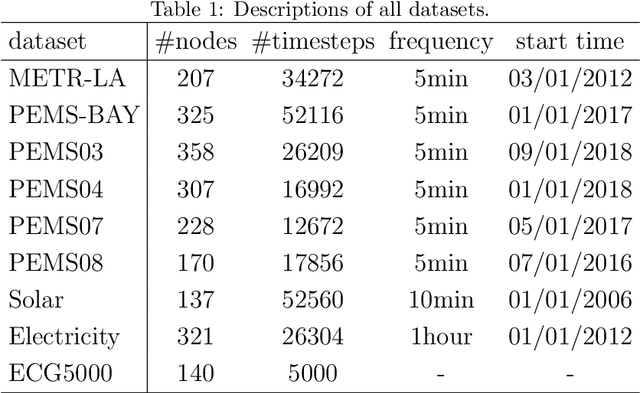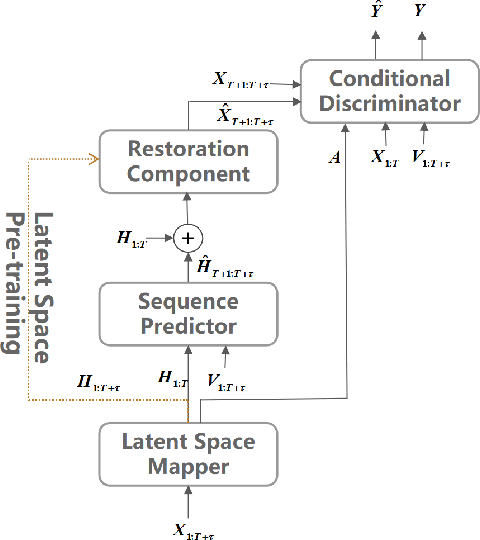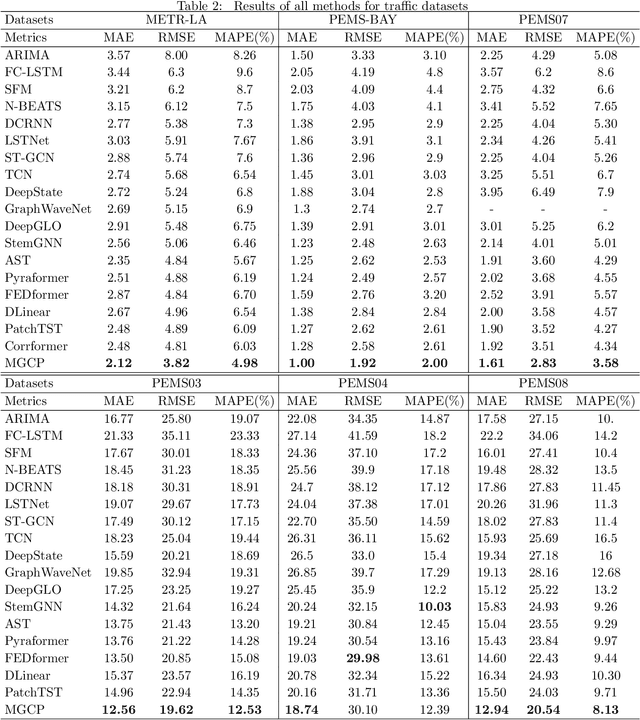Zhong Zhang
2D-Curri-DPO: Two-Dimensional Curriculum Learning for Direct Preference Optimization
Apr 10, 2025Abstract:Aligning large language models with human preferences is crucial for their safe deployment. While Direct Preference Optimization (DPO) offers an efficient alternative to reinforcement learning from human feedback, traditional DPO methods are limited by their reliance on single preference pairs. Recent work like Curriculum-DPO integrates multiple pairs using a one-dimensional difficulty curriculum based on pairwise distinguishability (PD), but overlooks the complexity of the input prompt itself. To address this, we propose 2D-Curri-DPO, a novel framework employing a two-dimensional curriculum that jointly models Prompt Complexity (PC) and Pairwise Distinguishability. This framework introduces dual difficulty metrics to quantify prompt semantic complexity and response preference clarity, defines a curriculum strategy space encompassing multiple selectable strategies for task adaptation, and incorporates a KL-divergence-based adaptive mechanism for dynamic reference model updates to enhance training stability. Comprehensive experiments demonstrate that 2D-Curri-DPO significantly outperforms standard DPO and prior curriculum methods across multiple benchmarks, including MT-Bench, Vicuna Bench, and WizardLM. Our approach achieves state-of-the-art performance on challenging test sets like UltraFeedback. Ablation studies confirm the benefits of the 2D structure and adaptive mechanisms, while analysis provides guidance for strategy selection. These findings demonstrate that effective alignment requires modeling both prompt complexity and pairwise distinguishability, establishing adaptive, multi-dimensional curriculum learning as a powerful and interpretable new paradigm for preference-based language model optimization.
Learning to Generate Structured Output with Schema Reinforcement Learning
Feb 26, 2025Abstract:This study investigates the structured generation capabilities of large language models (LLMs), focusing on producing valid JSON outputs against a given schema. Despite the widespread use of JSON in integrating language models with programs, there is a lack of comprehensive analysis and benchmarking of these capabilities. We explore various aspects of JSON generation, such as structure understanding, escaping, and natural language description, to determine how to assess and enable LLMs to generate valid responses. Building upon this, we propose SchemaBench features around 40K different JSON schemas to obtain and assess models' abilities in generating valid JSON. We find that the latest LLMs are still struggling to generate a valid JSON string. Moreover, we demonstrate that incorporating reinforcement learning with a Fine-grained Schema Validator can further enhance models' understanding of JSON schema, leading to improved performance. Our models demonstrate significant improvement in both generating JSON outputs and downstream tasks.
AgentRM: Enhancing Agent Generalization with Reward Modeling
Feb 25, 2025Abstract:Existing LLM-based agents have achieved strong performance on held-in tasks, but their generalizability to unseen tasks remains poor. Hence, some recent work focus on fine-tuning the policy model with more diverse tasks to improve the generalizability. In this work, we find that finetuning a reward model to guide the policy model is more robust than directly finetuning the policy model. Based on this finding, we propose AgentRM, a generalizable reward model, to guide the policy model for effective test-time search. We comprehensively investigate three approaches to construct the reward model, including explicit reward modeling, implicit reward modeling and LLM-as-a-judge. We then use AgentRM to guide the answer generation with Best-of-N sampling and step-level beam search. On four types of nine agent tasks, AgentRM enhances the base policy model by $8.8$ points on average, surpassing the top general agent by $4.0$. Moreover, it demonstrates weak-to-strong generalization, yielding greater improvement of $12.6$ on LLaMA-3-70B policy model. As for the specializability, AgentRM can also boost a finetuned policy model and outperform the top specialized agent by $11.4$ on three held-in tasks. Further analysis verifies its effectiveness in test-time scaling. Codes will be released to facilitate the research in this area.
WorkflowLLM: Enhancing Workflow Orchestration Capability of Large Language Models
Nov 08, 2024Abstract:Recent advancements in large language models (LLMs) have driven a revolutionary paradigm shift in process automation from Robotic Process Automation to Agentic Process Automation by automating the workflow orchestration procedure based on LLMs. However, existing LLMs (even the advanced OpenAI GPT-4o) are confined to achieving satisfactory capability in workflow orchestration. To address this limitation, we present WorkflowLLM, a data-centric framework elaborately designed to enhance the capability of LLMs in workflow orchestration. It first constructs a large-scale fine-tuning dataset WorkflowBench with 106,763 samples, covering 1,503 APIs from 83 applications across 28 categories. Specifically, the construction process can be divided into three phases: (1) Data Collection: we collect real-world workflow data from Apple Shortcuts and RoutineHub, transcribing them into Python-style code. We further equip them with generated hierarchical thought via ChatGPT. (2) Query Expansion: we prompt ChatGPT to generate more task queries to enrich the diversity and complexity of workflows. (3) Workflow Generation: we leverage an annotator model trained on collected data to generate workflows for synthesized queries. Finally, we merge the synthetic samples that pass quality confirmation with the collected samples to obtain the WorkflowBench. Based on WorkflowBench, we fine-tune Llama-3.1-8B to obtain WorkflowLlama. Our experiments show that WorkflowLlama demonstrates a strong capacity to orchestrate complex workflows, while also achieving notable generalization performance on previously unseen APIs. Additionally, WorkflowBench exhibits robust zero-shot generalization capabilities on an out-of-distribution task planning dataset, T-Eval. Our data and code are available at https://github.com/OpenBMB/WorkflowLLM.
Distance between Relevant Information Pieces Causes Bias in Long-Context LLMs
Oct 18, 2024



Abstract:Positional bias in large language models (LLMs) hinders their ability to effectively process long inputs. A prominent example is the "lost in the middle" phenomenon, where LLMs struggle to utilize relevant information situated in the middle of the input. While prior research primarily focuses on single pieces of relevant information, real-world applications often involve multiple relevant information pieces. To bridge this gap, we present LongPiBench, a benchmark designed to assess positional bias involving multiple pieces of relevant information. Thorough experiments are conducted with five commercial and six open-source models. These experiments reveal that while most current models are robust against the "lost in the middle" issue, there exist significant biases related to the spacing of relevant information pieces. These findings highlight the importance of evaluating and reducing positional biases to advance LLM's capabilities.
Proactive Agent: Shifting LLM Agents from Reactive Responses to Active Assistance
Oct 16, 2024



Abstract:Agents powered by large language models have shown remarkable abilities in solving complex tasks. However, most agent systems remain reactive, limiting their effectiveness in scenarios requiring foresight and autonomous decision-making. In this paper, we tackle the challenge of developing proactive agents capable of anticipating and initiating tasks without explicit human instructions. We propose a novel data-driven approach for this problem. Firstly, we collect real-world human activities to generate proactive task predictions. These predictions are then labeled by human annotators as either accepted or rejected. The labeled data is used to train a reward model that simulates human judgment and serves as an automatic evaluator of the proactiveness of LLM agents. Building on this, we develop a comprehensive data generation pipeline to create a diverse dataset, ProactiveBench, containing 6,790 events. Finally, we demonstrate that fine-tuning models with the proposed ProactiveBench can significantly elicit the proactiveness of LLM agents. Experimental results show that our fine-tuned model achieves an F1-Score of 66.47% in proactively offering assistance, outperforming all open-source and close-source models. These results highlight the potential of our method in creating more proactive and effective agent systems, paving the way for future advancements in human-agent collaboration.
Learning Evolving Tools for Large Language Models
Oct 09, 2024



Abstract:Tool learning enables large language models (LLMs) to interact with external tools and APIs, greatly expanding the application scope of LLMs. However, due to the dynamic nature of external environments, these tools and APIs may become outdated over time, preventing LLMs from correctly invoking tools. Existing research primarily focuses on static environments and overlooks this issue, limiting the adaptability of LLMs in real-world applications. In this paper, we propose ToolEVO, a novel framework designed to enhance the adaptive and reflective capabilities of LLMs against tool variability. By leveraging Monte Carlo Tree Search, ToolEVO facilitates active exploration and interaction of LLMs within dynamic environments, allowing for autonomous self-reflection and self-updating of tool usage based on environmental feedback. Additionally, we introduce ToolQA-D, a benchmark specifically designed to evaluate the impact of tool variability. Extensive experiments demonstrate the effectiveness and stability of our approach, highlighting the importance of adaptability to tool variability for effective tool learning.
Self-Introspective Decoding: Alleviating Hallucinations for Large Vision-Language Models
Aug 04, 2024Abstract:While Large Vision-Language Models (LVLMs) have rapidly advanced in recent years, the prevalent issue known as the `hallucination' problem has emerged as a significant bottleneck, hindering their real-world deployments. Existing methods mitigate this issue mainly from two perspectives: One approach leverages extra knowledge like robust instruction tuning LVLMs with curated datasets or employing auxiliary analysis networks, which inevitable incur additional costs. Another approach, known as contrastive decoding, induces hallucinations by manually disturbing the vision or instruction raw inputs and mitigates them by contrasting the outputs of the disturbed and original LVLMs. However, these approaches rely on empirical holistic input disturbances and double the inference cost. To avoid these issues, we propose a simple yet effective method named Self-Introspective Decoding (SID). Our empirical investigation reveals that pretrained LVLMs can introspectively assess the importance of vision tokens based on preceding vision and text (both instruction and generated) tokens. We develop the Context and Text-aware Token Selection (CT2S) strategy, which preserves only unimportant vision tokens after early layers of LVLMs to adaptively amplify text-informed hallucination during the auto-regressive decoding. This approach ensures that multimodal knowledge absorbed in the early layers induces multimodal contextual rather than aimless hallucinations. Subsequently, the original token logits subtract the amplified vision-and-text association hallucinations, guiding LVLMs decoding faithfully. Extensive experiments illustrate SID generates less-hallucination and higher-quality texts across various metrics, without extra knowledge and much additional computation burdens.
Mix-Domain Contrastive Learning for Unpaired H&E-to-IHC Stain Translation
Jun 17, 2024Abstract:H&E-to-IHC stain translation techniques offer a promising solution for precise cancer diagnosis, especially in low-resource regions where there is a shortage of health professionals and limited access to expensive equipment. Considering the pixel-level misalignment of H&E-IHC image pairs, current research explores the pathological consistency between patches from the same positions of the image pair. However, most of them overemphasize the correspondence between domains or patches, overlooking the side information provided by the non-corresponding objects. In this paper, we propose a Mix-Domain Contrastive Learning (MDCL) method to leverage the supervision information in unpaired H&E-to-IHC stain translation. Specifically, the proposed MDCL method aggregates the inter-domain and intra-domain pathology information by estimating the correlation between the anchor patch and all the patches from the matching images, encouraging the network to learn additional contrastive knowledge from mixed domains. With the mix-domain pathology information aggregation, MDCL enhances the pathological consistency between the corresponding patches and the component discrepancy of the patches from the different positions of the generated IHC image. Extensive experiments on two H&E-to-IHC stain translation datasets, namely MIST and BCI, demonstrate that the proposed method achieves state-of-the-art performance across multiple metrics.
MGCP: A Multi-Grained Correlation based Prediction Network for Multivariate Time Series
May 30, 2024



Abstract:Multivariate time series prediction is widely used in daily life, which poses significant challenges due to the complex correlations that exist at multi-grained levels. Unfortunately, the majority of current time series prediction models fail to simultaneously learn the correlations of multivariate time series at multi-grained levels, resulting in suboptimal performance. To address this, we propose a Multi-Grained Correlations-based Prediction (MGCP) Network, which simultaneously considers the correlations at three granularity levels to enhance prediction performance. Specifically, MGCP utilizes Adaptive Fourier Neural Operators and Graph Convolutional Networks to learn the global spatiotemporal correlations and inter-series correlations, enabling the extraction of potential features from multivariate time series at fine-grained and medium-grained levels. Additionally, MGCP employs adversarial training with an attention mechanism-based predictor and conditional discriminator to optimize prediction results at coarse-grained level, ensuring high fidelity between the generated forecast results and the actual data distribution. Finally, we compare MGCP with several state-of-the-art time series prediction algorithms on real-world benchmark datasets, and our results demonstrate the generality and effectiveness of the proposed model.
 Add to Chrome
Add to Chrome Add to Firefox
Add to Firefox Add to Edge
Add to Edge